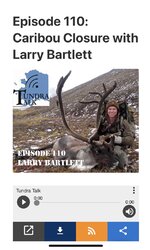william schmaltz
WKR
It seemed like when this was implemented a few years ago, there wasn't much of a dispute that hunters could hunt below the mean high water mark because of the designation of the federal lands up there. I believe the Sturgeon case made it concrete how submerged lands are designated, but it was mostly focused on if that included land within the preserve.
From my limited experience in GMU23, it seems like the juice wouldn't be worth the squeeze to try and get a boat from the village to the places caribou hunters are flow into in August and September. Which is where the fight lies, the caribou haven't been making their way to the easy access spots near the village where the locals historically have found em. Or so they say.
From my limited experience in GMU23, it seems like the juice wouldn't be worth the squeeze to try and get a boat from the village to the places caribou hunters are flow into in August and September. Which is where the fight lies, the caribou haven't been making their way to the easy access spots near the village where the locals historically have found em. Or so they say.



